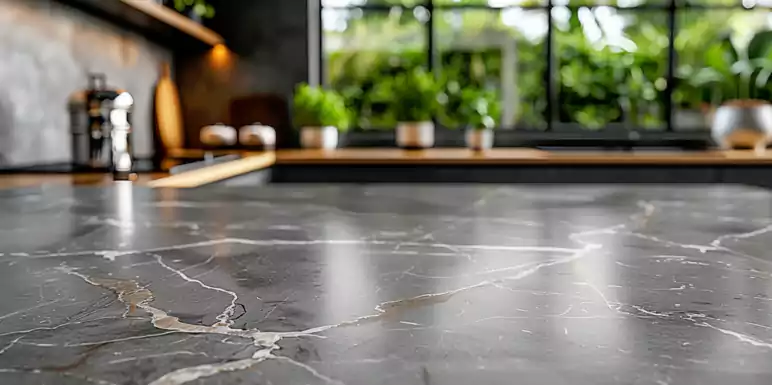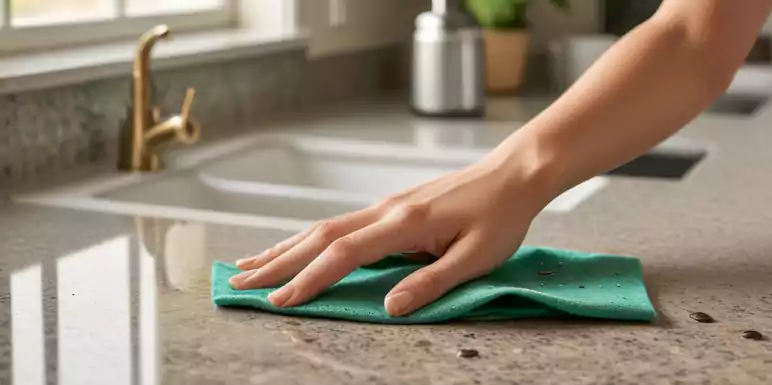
Honed granite countertops, while resilient, are prone to staining from spills if not addressed promptly. Here’s an in-depth guide to effectively managing spills and preventing stains:
Understanding the Risk:
- Porous Nature: Unlike polished granite, honed granite has a more porous surface which can absorb liquids more readily. This makes it crucial to address spills as soon as they occur to prevent staining.
- Types of Liquids: Common kitchen liquids such as coffee, red wine, tomato juice, and cooking oils are especially problematic. They contain pigments and oils that can easily seep into the granite and cause discoloration.
Immediate Response:
- Initial Action: The first step is to quickly blot the spill with a clean, dry cloth or paper towels. Blotting helps absorb the liquid without pushing it further into the stone.
- Avoid Scrubbing: Do not scrub or rub the area, as this can spread the spill and potentially damage the surface.
- Blotting Technique: Use a blotting motion with a fresh section of cloth or paper towel. Continue blotting until the cloth no longer picks up any liquid.
Cleaning the Affected Area:
- Preparing the Cleaning Solution: Mix a small amount of mild dish soap with warm water to create a gentle cleaning solution. You can also use a pH-neutral cleaner specifically designed for granite.
- Cleaning Procedure: Dampen a soft cloth or sponge with the cleaning solution. Gently clean the area where the spill occurred, making sure to cover the entire affected region.
- Rinsing: Rinse the cloth or sponge with clean water and wipe down the area to remove any soap residue. Soap residues can leave a film that dulls the granite’s appearance.
- Drying: Use a dry, soft cloth to thoroughly dry the countertop. This step helps prevent water spots and ensures that no moisture remains on the surface.

Preventative Measures:
- Use of Coasters and Trivets: Always place coasters under beverages and trivets under hot pots and pans. This minimizes the risk of spills and protects the granite from heat damage.
- Regular Sealing: Ensure that your granite countertops are properly sealed. Sealing helps create a protective barrier against stains and moisture. Follow the manufacturer’s recommendations for re-sealing intervals.
Dealing with Persistent Stains:
- Poultice Application: For stains that persist despite immediate cleanup, use a poultice. Make a paste with baking soda and water, apply it to the stain, cover it with plastic wrap, and let it sit for 24 hours. This process draws out the stain from the granite.
- Wipe and Clean: After removing the poultice, clean the area with a mild detergent and water, then rinse thoroughly.
- Professional Assistance: For tough or large stains, seek help from a professional stone care service. They can provide specialized treatments and advice to restore your countertop.
Additional Tips:
- Regular Monitoring: Regularly inspect your countertops for any signs of staining or damage. Early detection can prevent larger issues and maintain the granite’s appearance.
- Avoiding Acidic Substances: Be cautious with substances like citrus juices, vinegar, and certain cleaning products that can etch or damage the granite surface.

